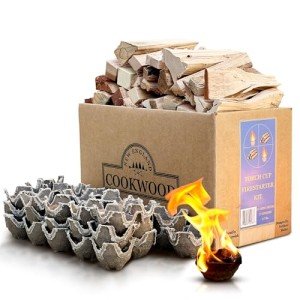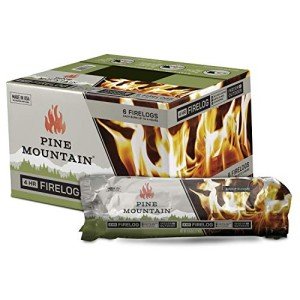When it comes to crafting the perfect pizza, the choice of cooking wood can make all the difference. Among various types of wood available, kiln dried oak has gained popularity among gastronomes and professional chefs alike, specifically for use in pizza ovens. Its unique characteristics, efficient burning capabilities, and distinct flavor profile contribute significantly to the artistic expression of pizza making. This guide delves into the advantages of kiln dried oak cooking wood, its usage, and other essential considerations for pizza enthusiasts.
What is Kiln Dried Oak?
Kiln dried oak wood is sourced from oak trees, a hardwood variety known for its density and durability. The 'kiln dried' processing refers to the controlled drying process that reduces the moisture content of the wood to around 10-20%. This method enhances the wood's burning efficiency and flavor profile while preventing undesirable combustion characteristics associated with higher moisture content, such as excessive smoke and lower heat output.
Benefits of Kiln Dried Oak for Pizza Ovens
-
High Heat Output: Kiln dried oak provides an exceptional heat output, reaching temperatures of up to 800°F (427°C) or higher. This intense heat is crucial for cooking pizzas in a short time, achieving that perfect crust and melty cheese combination.
-
Quality Flavor: The mild, slightly sweet flavor of oak lends itself beautifully to pizza cooking. It infuses the crust and toppings with a subtle smokiness that enhances the overall taste without overpowering other ingredients.
-
Consistent Burn: Since kiln dried oak has a lower moisture content, it burns evenly and consistently. This attribute is critical when managing the temperature in a pizza oven, helping to ensure even cooking across the pizza.
-
Long Burn Time: The density of hardwoods like oak means they have a longer burn time compared to softer woods. This quality reduces the frequency of adding wood during cooking sessions, allowing for more uninterrupted cooking.
-
Ease of Use: Kiln dried oak produces minimal sparks and residue, making it easier and safer to handle in a cooking environment.
How to Use Kiln Dried Oak in Pizza Ovens
Getting the most out of kiln dried oak for pizza cooking involves understanding the right techniques. Here are some practical tips:
-
Selecting the Right Size: The size of your wood pieces matters! Aim for logs that are approximately 1-2 inches in diameter. This size allows for quicker ignition and better heat control.
-
Building a Good Fire: Start with a small fire using kindling and smaller pieces of kiln dried oak. Once the fire is established, gradually add larger logs to maintain temperature.
-
Monitoring Temperature: Use an infrared thermometer to keep an eye on the oven temperature. Ideally, you want the oven to reach around 700°F to 800°F for optimal pizza cooking.
-
Rotating Pizzas: To ensure even cooking, frequently rotate your pizzas. This keeps the base crisp while ensuring toppings are perfectly cooked.
-
Cleaning the Ashes: Regularly remove ashes from the oven to maintain airflow and heat efficiency.
Safety Precautions
While using kiln dried oak in pizza ovens produces great results, safety should never be overlooked. Here are some precautions to consider:
-
Proper Ventilation: Ensure proper ventilation in the cooking area to avoid smoke inhalation.
-
Handling with Care: Use fire-retardant gloves and tools when handling hot wood and pizzas.
-
Cooling Down: Allow your oven to cool completely before cleaning and gathering coals.
FAQs about Kiln Dried Oak Cooking Wood for Pizza Ovens
1. Why should I choose kiln dried oak over other types of wood?
Kiln dried oak is preferable due to its high heat output, consistent burning, and unique flavor profile. It creates an even cooking environment crucial for pizza preparation.
2. Can I use other types of wood for pizza ovens?
Certainly. While other hardwoods like hickory, maple, and cherry can be used, they might impart different flavors and burning characteristics. For a classic pizza flavor, oak is a preferred choice.
3. How should I store kiln dried oak?
Kiln dried oak should be stored in a dry, well-ventilated space. Keeping it off the ground and covered will protect it from moisture and insects.
4. How long does kiln dried oak last?
Kiln dried oak, when stored properly, can last for multiple cooking sessions. However, it’s always best to inspect it for signs of rot or pests before use.
5. Is kiln dried wood better for the environment?
While kiln drying consumes energy, it is generally more eco-friendly than cutting down and curing fresh wood. Furthermore, using recycled or sustainably sourced wood can minimize environmental impact.
Kiln dried oak cooking wood is an excellent choice for pizza ovens, combining high heat, wonderful flavor, and ease of use. Its desirable burning characteristics ensure that both home cooks and professional chefs can create delicious pizzas with that authentic wood-fired taste. By understanding how to utilize kiln dried oak effectively and following safety precautions, anyone can elevate their pizza-making game, making memorable meals that delight family and friends. Whether you’re a pizza enthusiast or a seasoned chef, exploring the culinary possibilities of kiln dried oak will undoubtedly enhance your cooking experience.






